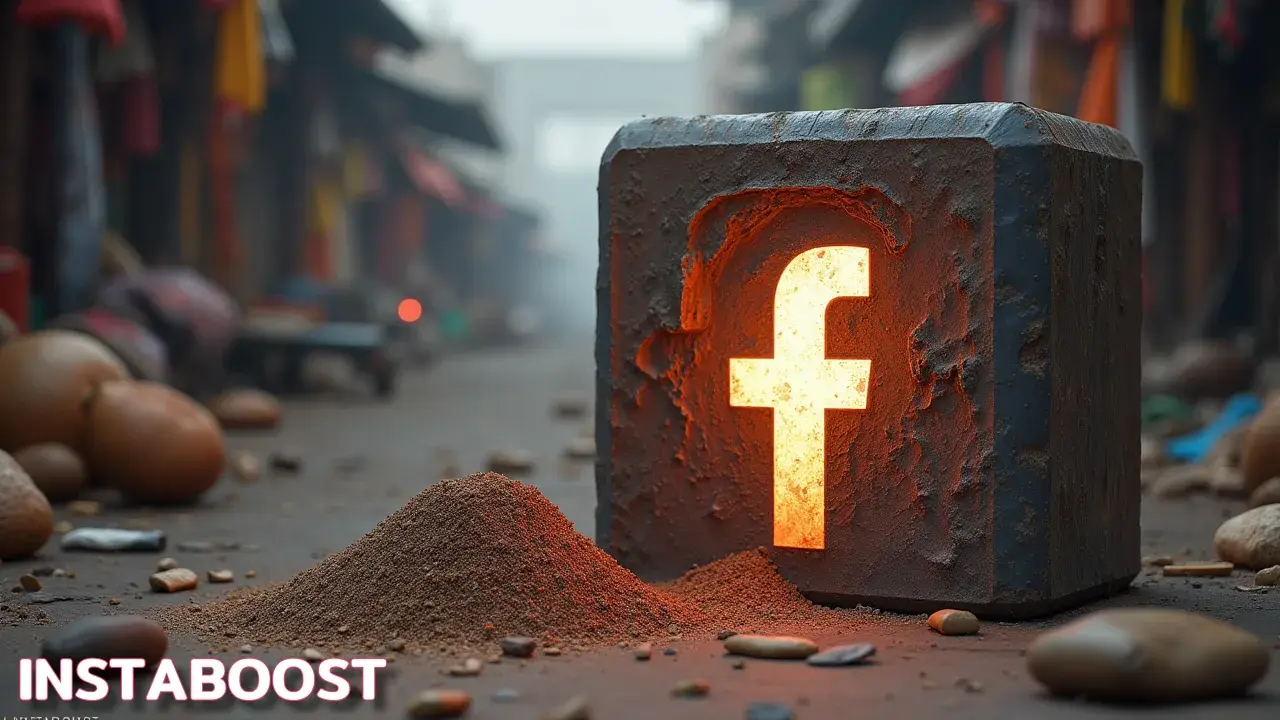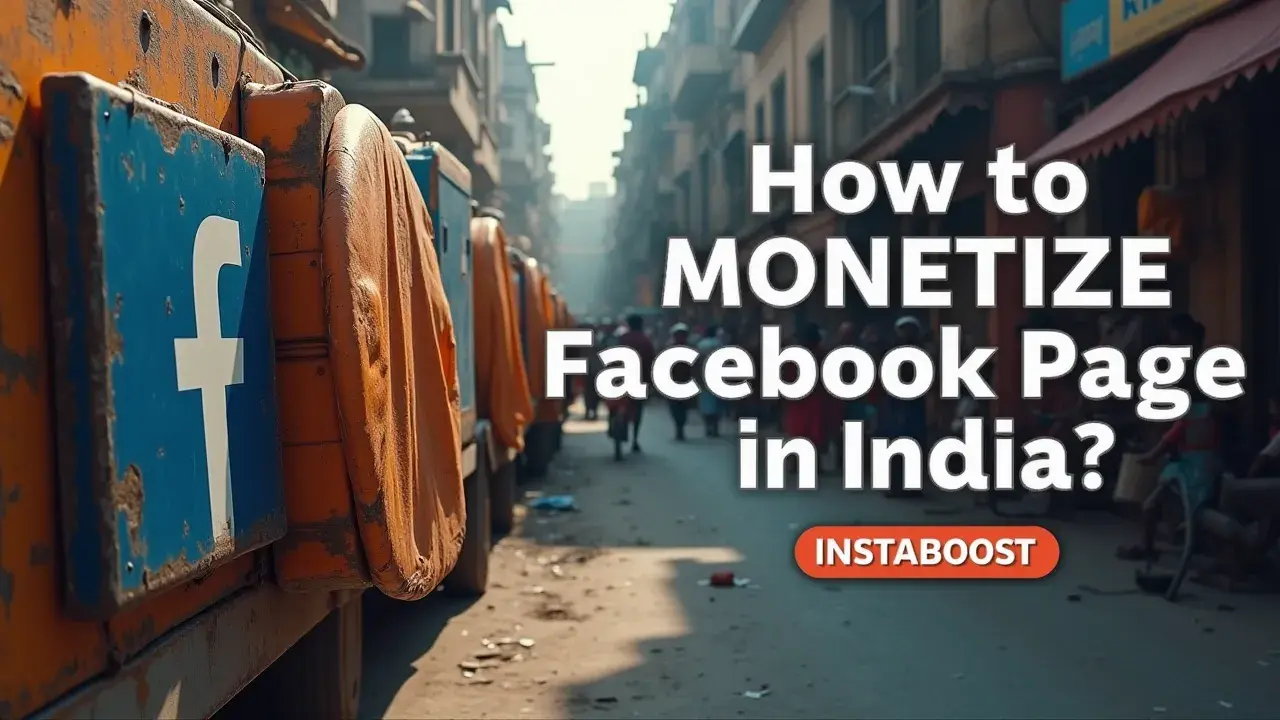How To Monetize a Facebook Page in India?
Monetizing a Facebook page in India depends on meeting eligibility and using the right features. Creators typically need to satisfy criteria such as follower thresholds, content and policy compliance, and feature availability for the region. Practical steps include enabling monetization tools, configuring payouts, and aligning content with the formats supported for Indian creators. When these elements are in place, consistent, policy-safe content and measured audience growth form a smart path to reliable earnings.
The Realities of Turning Facebook Pages into Revenue Streams in India
Monetizing a Facebook page in India isn’t really about chasing big numbers or hoping something goes viral anymore. Facebook has made things clearer these days: there are options like in-stream ads, fan subscriptions, branded content, and some new ways coming in through outside partners. But in practice, what actually works for Indian creators can look a bit different from the global picture.
The main systems – algorithms, eligibility for tools, how payments get processed – are all set up for everyone, everywhere, but there are some details here that don’t always show up in Facebook’s help docs. For example, the payout minimums aren’t quite the same, local tax rules need to be sorted out, and even the way people engage with posts in India feels a little different – sometimes more comments than shares, or a sharp jump in activity around festival seasons. Many Indian page owners who are making it work have realized the bigger challenge isn’t just ticking boxes for Ad Breaks or Stars; it’s growing a community that stays involved and that brands actually want to reach.
Sometimes, it’s worth looking at resources outside the official channels and seeing how others upgrade your Facebook page strategy to fit local realities. That means it helps to be clear about how Facebook’s monetization tools actually work – what counts as meaningful activity, which page topics brands are looking for, and how things like Indian bank transfers might change the timing or size of your payouts.
Whether your page is about quick recipes, old movie clips, or local news, it’s a mix of understanding the details, staying flexible, and noticing what’s actually working for your audience here. This guide is meant to lay out some of those specifics, so you don’t have to spend weeks sorting through half-answers and can start to figure out what fits your own page.
Whether your page is about quick recipes, old movie clips, or local news, it’s a mix of understanding the details, staying flexible, and noticing what’s actually working for your audience here. This guide is meant to lay out some of those specifics, so you don’t have to spend weeks sorting through half-answers and can start to figure out what fits your own page.

Quality Over Quantity: What Brands and Facebook Reward
When it comes to making money from a Facebook page in India, not every piece of data tells the full story. It’s not really about having the biggest number of followers, or racking up likes and shares that don’t go anywhere. What actually counts is whether the people seeing your posts are real, whether they care enough to interact, and if your updates actually mean something to them. For example, if a page has 20,000 followers who actually comment, share posts, and react to what you say, that can mean a lot more to brands than a page with ten times as many people who never get involved.
Facebook’s own monetization rules in India pay attention to things like this. They look for pages that don’t just pull in big crowds, but show consistency, original work, and a level of trust with the people following along. Sometimes you see people buy followers for Facebook page, but that rarely leads to genuine connection or long-term value.
Advertisers have started looking into these patterns too – they’ll check your insights, see the makeup of your audience, and look at how people interact before they want to spend any money on a partnership. The way people watch your videos, how often they come back, or whether your audience is growing steadily over time, all these details matter more than one-off viral spikes or clickbait. Building a community that sticks around – people who show up for local comedy, or regional news, or lessons in a particular language – tends to make more of a difference than chasing after reach for its own sake. Trying to offer something real that the audience actually values gets further, even if those numbers on the surface look smaller.
Strategic Content Mixing: The Secret to Sustainable Monetization
A lot of people trying to make money from Facebook pages in India end up following the same routine over and over – posting what went viral before, or picking up on whatever meme or trend seems to be working for everyone else. It’s easy to fall into that, especially when things online can change overnight. But when I look at the pages that seem to do well over time, there’s usually a bit more flexibility in how they work.
They don’t just rely on ad revenue or stick to one kind of post. Some of them add things like fan subscriptions or partner with brands for sponsored content, and a few even run private groups or test out affiliate offers, sometimes on WhatsApp or elsewhere. I’ve even come across pages that quietly purchase Facebook likes for engagement, treating it almost like a nudge to get the ball rolling when things slow down. Facebook’s algorithm tends to notice when a page keeps its followers involved and interested, which can help with both reach and whatever payouts come from it. Mixing things up might look like sharing an explainer video one day, then running a poll or going live to demo a product you’re working with.
It gives people more reasons to stay engaged, and it means you’re not left scrambling if something about the platform shifts. If making steady income from a page is the goal, it seems worth thinking about it like building something with different moving parts, rather than chasing a single lucky break. There are a lot of ways to keep things going, if you pay attention.
Don’t Chase Vanity Metrics – Spot the Traps That Kill Growth
From what I’ve seen, trying to make money from a Facebook page in India can feel pretty frustrating if you start chasing all the common advice. There’s a lot out there about doing giveaways every week to grow your followers, posting clickbait stories, or worrying nonstop about how often you post. But when I look at pages that fizzle out, it’s usually because they get caught up in those things and end up chasing stats that don’t really translate to income.
Facebook’s monetization tools – whether that’s branded content, subscriptions, or ad revenue – aren’t as focused on surface numbers as they used to be. The system is better now at telling real engagement from fake. If you’re using fake profiles for likes, sharing memes just to go viral, or reusing old content that doesn’t mean much to your audience, you’ll probably notice that both brands and Facebook don’t pay much attention to your page when it matters. I’ve even seen people try all sorts of shortcuts, like using services where you can buy real Facebook views, and still end up back at square one if their content doesn’t actually connect.
Actually earning from your page is more about trust than tricks. It’s better to focus on real conversations, responding to people thoughtfully, sharing things that matter to your community, and noticing when your regular followers spend time watching or interacting. That’s what the algorithm – and the brands who might want to partner – are actually looking for: signs that people value what you’re doing. If you want to build something that lasts, the quick routes are tempting but usually lead to a dead end. The pages that spend time building real relationships and a genuine community tend to find more opportunities, both from Facebook’s own features and from brands who care about actual influence, not just numbers on a screen.
Stay Honest, Stay Profitable: Authenticity as Your Edge
The thing is, truth doesn’t usually draw attention to itself, but it has a way of guiding everything in the background. If you want to make money from a Facebook page in India, the pages people keep coming back to aren’t the ones filled with nonstop sales or tricks to grab likes. They’re the ones where it’s clear the person behind the page actually cares. Say you’re posting about places to eat in your city, showing how to do a dance step, or sharing updates that matter to your community – people always pick up on whether you’re sharing because it means something to you or if you’re only after clicks.
When posts start to feel like ad after ad, or every other update is pushing another affiliate link, followers tend to slip away quietly, and that’s when the earnings slow down too. It’s funny how sometimes engagement also grows in ways you didn’t expect – like when people get more post engagement via shares, not just likes or comments, simply because they connect with what you’re putting out there. It works better when you let monetization be part of what you already do, so it doesn’t stick out. If you’re recommending a product, it helps if you’ve genuinely used it and have something real to say. When you talk about paid services, explaining why they’re helpful goes a long way.
People trust that, and honestly, brands notice the difference too – they want to work with pages that actually influence their audience. With Facebook getting stricter about spammy posts and clickbait, being straightforward isn’t just about doing the right thing; it’s become necessary if you want to stick around. Over time, being upfront with people is what keeps your reputation together, and it’s that steady trust that makes the difference when everything else keeps shifting.
The Long Game: Build Assets Beyond the Algorithm
When I look at people trying to earn money from a Facebook page in India, the ones who seem to make it work long-term are the ones who don’t treat Facebook as the end goal. They use their page to start something else – maybe collecting email addresses, setting up a simple website, or bringing people together in a group they run themselves. It’s not just about followers or likes, because Facebook changes things all the time, and what works now can stop working pretty quickly. Sometimes people even try to boost post performance with reactions, but that alone doesn’t guarantee any real stability.
But if you have your own email list or your own site, you still have a way to reach your audience even if the platform’s rules shift. That’s when you can start sharing products you believe in as an affiliate, or put together a small course, or handle brand partnerships without depending on Facebook’s system. The pages that last are the ones where people quietly guide their audience towards these spaces they own, so they’re not always at the mercy of someone else’s updates.
So, even if you’re experimenting with Facebook’s monetization or doing sponsored posts, it’s probably worth slowly building up your own assets alongside it all. That way, if things swing up or down on the platform, you’re not left scrambling, and you still have something you can rely on. Most people don’t pay much attention to this part at first, but over time, it’s what actually makes a difference.















